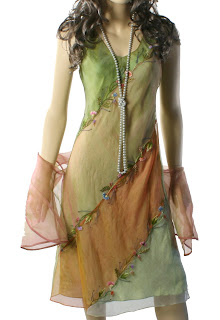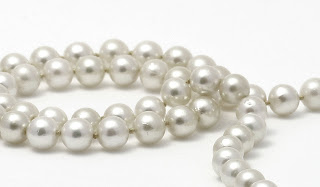 Using a mannequin to show scale for long necklaces works really well. I shot several more necklaces today using this method. One thing that I noticed today is that I liked the necklace best on very simple clothing.
Using a mannequin to show scale for long necklaces works really well. I shot several more necklaces today using this method. One thing that I noticed today is that I liked the necklace best on very simple clothing.For consistency, if I had a jewelry website, I would try to shoot all of my pieces against similar clothing. If I chose white, I would purchase a few similar white tops, and alternate styles in between shots. Keeping the same color ties it all together.
Dressing the mannequin is getting much faster and easier. In these two shots I was happy I had purchased a long curly wig so that I could use the hair to cover the seams where the arms join the torso.
Tomorrow I will work on the close-up shots of the same items. If they were for sale, I would want buyers to see the mannequin shot for scale, but then a close-up shot to show the necklace detail. They are both quite elaborate in design, and have beautiful stones that will look great in a macro shot.



